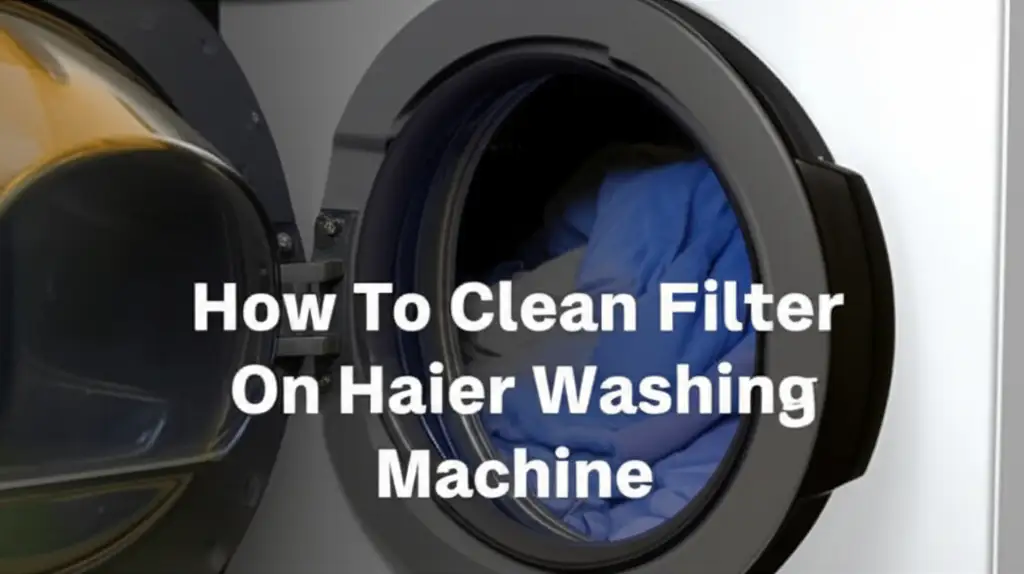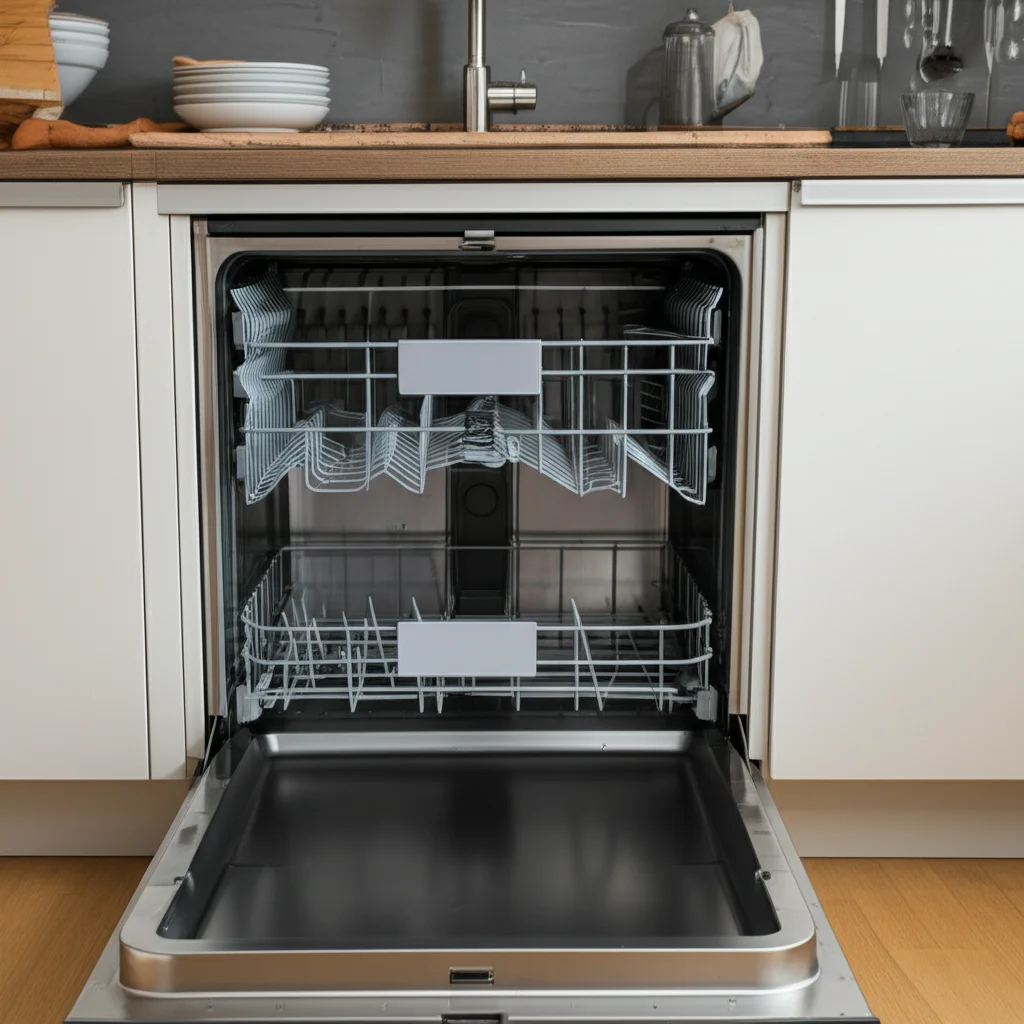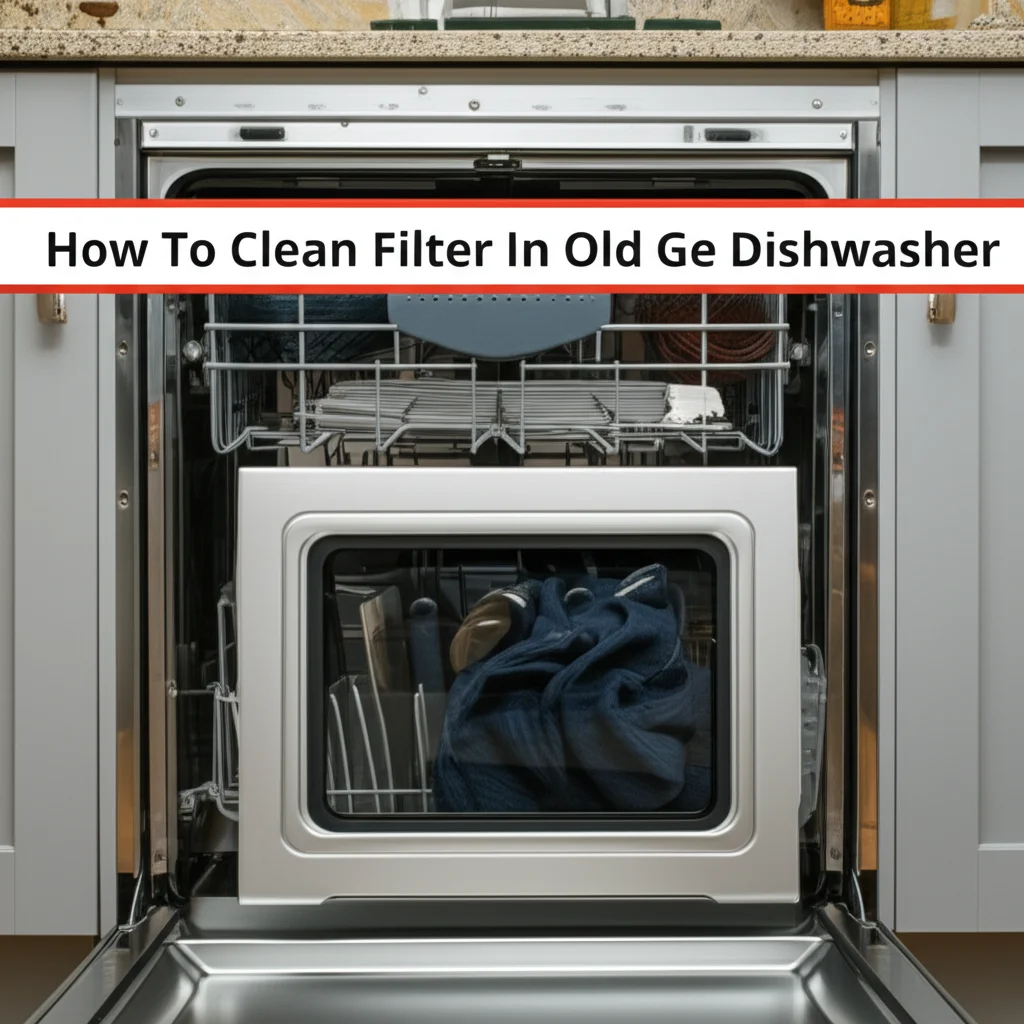· Todd Martin · Appliance Maintenance · 13 min read
How To Clean Kenmore Washing Machine Series 600

How To Clean Kenmore Washing Machine Series 600
Have you noticed a strange smell coming from your clothes after a wash cycle? Does your Kenmore washing machine Series 600 seem less effective lately? This is a common problem for many households. Over time, residue from detergents, fabric softeners, and even hard water builds up inside your washer.
This buildup creates a perfect environment for mold, mildew, and bacteria to grow. These issues can cause unpleasant odors and prevent your clothes from getting truly clean. A dirty washing machine works harder and uses more energy, too. I understand the frustration of doing laundry only to find your clothes do not smell fresh.
Learning how to clean your Kenmore washing machine Series 600 is important. Regular cleaning improves performance and extends the life of your appliance. It also keeps your clothes fresh and odor-free. This article provides a clear guide on cleaning every part of your Kenmore Series 600 washer. We will cover the drum, dispenser, gasket, and filters. You will learn simple, effective methods to maintain a spotless and efficient machine.
Takeaway
- Regularly clean your Kenmore Series 600 washing machine to prevent odors and buildup.
- Use vinegar or bleach cycles for deep cleaning the drum.
- Pay attention to the dispenser and door gasket to remove mold and mildew.
- Clean the drain pump filter and inlet screens often to ensure proper function.
To clean a Kenmore washing machine Series 600, run empty hot water cycles using white vinegar or bleach to sanitize the drum. Regularly wipe down the door gasket and dispenser tray to remove mold and soap scum. Also, check and clean the drain pump filter and water inlet screens for optimal performance.
Why Your Kenmore Series 600 Needs Regular Cleaning
Your washing machine works hard to keep your clothes clean. However, it also collects a lot of grime. Every time you do laundry, soap residue, dirt, and lint remain inside the machine. This buildup is not just unsightly; it creates bigger problems. I have seen many people wonder why their “clean” clothes still smell musty.
The main reason is bacteria and mold growing in the dark, damp spaces of the washer. These organisms thrive in environments with moisture and organic matter. This situation directly affects your laundry. Your clothes will not get truly clean, and they may even pick up new odors. This makes your efforts to do laundry less effective.
Regular cleaning prevents these issues. It removes the unseen culprits causing bad smells and ineffective washing. Cleaning also helps your Kenmore Series 600 washing machine run more efficiently. When parts like the drum and hoses are clear of debris, water flows better, and the machine works less hard. This can save energy and reduce wear and tear on components.
Think of it as routine maintenance for a hard-working appliance. Just like you clean your home, your washing machine needs care. Keeping it clean ensures it does its job well every time. It also helps avoid costly repairs down the line. A clean machine delivers clean clothes, and that is what we all want.
Essential Tools and Supplies for Kenmore Washing Machine Cleaning
Cleaning your Kenmore washing machine Series 600 does not require special tools. You likely have most of the items already. Gathering your supplies beforehand makes the cleaning process smooth. I always recommend having these items ready before you start.
First, you will need a cleaning agent for the drum. White distilled vinegar is a popular and effective choice. It helps to break down soap scum and kill bacteria. Another option is bleach, which sanitizes and removes odors. Never mix vinegar and bleach, as this creates dangerous fumes. Choose one or the other for your main drum cleaning cycle. For specific guidance on using vinegar, you can explore how to clean washing machine with vinegar.
For wiping down surfaces, you will need clean cloths or sponges. Microfiber cloths work well for catching dirt and grime. An old toothbrush or a small brush is useful for scrubbing tight spots. These tools help you reach into crevices where mold and mildew often hide. A spray bottle can also be helpful for applying cleaning solutions to specific areas.
You might also need a bucket or towel for catching water. This is especially true when cleaning the drain pump filter. Some rubber gloves are a good idea to protect your hands from cleaning agents. With these simple items, you are ready to tackle any buildup in your Kenmore Series 600 washer. Having everything prepared helps you work efficiently and safely.
Step-by-Step Guide to Cleaning the Kenmore Series 600 Drum
The washing machine drum is where all the action happens. It is also where detergent residue and hard water minerals build up. Cleaning the drum is the most important step for removing odors and ensuring clothes get clean. I always start here because it impacts the machine’s overall freshness.
First, ensure the Kenmore Series 600 washing machine is empty. Remove any clothes or items from the drum. Then, choose your cleaning agent: white vinegar or bleach. If using vinegar, pour two cups of white distilled vinegar directly into the detergent dispenser or the drum itself. If using bleach, pour half a cup of liquid chlorine bleach into the bleach dispenser. Remember, never mix vinegar and bleach.
Next, run a hot water cycle. Select the hottest water setting available on your Kenmore Series 600. Many modern washers have a “Clean Washer” or “Tub Clean” cycle. If your machine has this feature, use it. Otherwise, select a normal or heavy-duty cycle with the hottest water. This hot water helps to dissolve residue and activate the cleaning agent. The cycle washes away mold, mildew, and soap scum from the inner workings of the drum.
Once the cycle finishes, wipe down the inside of the drum with a clean cloth. Pay attention to any visible residue. You may need to run a second rinse cycle with plain water to ensure all cleaning agents are gone. This step ensures no chemical residue transfers to your next load of laundry. A clean drum is essential for truly clean clothes.
Addressing Mold and Mildew: Gasket and Dispenser Care
Mold and mildew love damp, dark places. The door gasket and detergent dispenser are prime spots for their growth. Ignoring these areas will lead to unpleasant odors, even after you clean the drum. I always make sure to give these parts extra attention during cleaning.
For front-load Kenmore Series 600 washers, the rubber door gasket is a common culprit. Pull back the folds of the gasket around the door opening. You will likely find dark, slimy residue there. This is mold and mildew. Wipe this area thoroughly with a cloth dipped in a solution of equal parts water and white vinegar. You can also use a mild bleach solution if preferred. Use an old toothbrush to scrub stubborn spots. After cleaning, wipe the gasket dry to prevent immediate regrowth. Leaving the washer door ajar after cycles helps air circulation and keeps this area dry.
The detergent dispenser tray also collects residue. Soap scum and fabric softener can build up, becoming sticky and discolored. Pull out the dispenser tray if your Kenmore Series 600 allows for removal. Wash it under warm running water with dish soap and a brush. For tough buildup, soak the tray in hot soapy water for 30 minutes. Rinse it well and dry it before putting it back. If the tray is not removable, use a small brush or cotton swabs to clean all visible parts. Keeping these areas clean prevents unpleasant smells and ensures proper dispensing of laundry products.
Cleaning the Kenmore Series 600 Filter and Drainage System
Many people overlook the filters in their washing machine, but they are crucial for performance. The drain pump filter traps lint, coins, and small items before they enter the drain pump. If this filter gets clogged, your Kenmore Series 600 might not drain properly, or it could develop odors. I consider cleaning this filter a vital part of full machine maintenance. To learn more about general filter cleaning, you can check how to clean washing machine filter. For top-loader Kenmore filters, see how to clean Kenmore washing machine filter top loader no agitator.
Locating the drain pump filter depends on your Kenmore Series 600 model. It is usually behind a small door at the bottom front of the machine. Always have towels ready and a shallow pan or bucket. Water will drain out when you open the filter housing. Unscrew the cap slowly, letting the water drain. Remove any debris, lint, or foreign objects from the filter. Rinse the filter under running water until it is clean. Some Kenmore Series 600 models might also have a small drain hose next to the filter for easier draining.
Another important area is the water inlet screens. These small screens are located where the water supply hoses connect to the back of your washing machine. They prevent sediment from entering the machine. If water flow seems slow or your machine is filling improperly, these might be clogged. Turn off the water supply and disconnect the hoses. Use needle-nose pliers to pull out the screens. Rinse them under running water and use a brush to remove any mineral buildup or debris. Reinsert the screens and reconnect the hoses tightly. Regular cleaning of these filters helps prevent issues like your Kenmore washing machine not draining and ensures clear water flow.
Deep Cleaning Tips for Stubborn Odors and Buildup
Sometimes, routine cleaning is not enough for stubborn odors or heavy buildup. Your Kenmore Series 600 might need a more intensive approach. I have dealt with persistent musty smells, and these methods often fix them. Do not give up if your washer still has an odor after a regular cycle.
One effective deep cleaning method involves a two-step process using both baking soda and vinegar. First, sprinkle half a cup of baking soda directly into the empty washer drum. Run a hot water cycle. Baking soda helps absorb odors and loosen grime. When that cycle finishes, add two cups of white vinegar to the dispenser or drum. Run another hot water cycle. This combination creates a powerful cleaning action. It tackles residues and kills remaining odor-causing bacteria.
For washers with severe mold issues, particularly in the gasket, a bleach paste can be useful. Mix a small amount of powdered bleach with water to form a thick paste. Apply this paste directly to the moldy areas on the gasket. Let it sit for 15-30 minutes, then scrub it away with an old toothbrush. Always wear gloves and ensure good ventilation when using bleach. Afterwards, wipe the area thoroughly with a damp cloth and run a quick rinse cycle. This helps remove lingering mold and bleach residue.
If your Kenmore Series 600 has an agitator, consider removing it for a deeper clean underneath. Sometimes, lint and grime build up in this hidden area. Refer to your owner’s manual or a guide like how to get agitator out of Kenmore washing machine for specific instructions. Cleaning these hidden spots ensures no lingering sources of odor or grime. These deep cleaning steps can refresh even the most challenged washing machines.
Maintaining Your Kenmore Series 600: Prevention and Best Practices
Cleaning your Kenmore Series 600 is important, but preventing buildup is even better. Simple daily habits extend the time between deep cleans. I always recommend these practices to keep your washing machine fresh and efficient. Prevention is key to long-term performance.
First, always remove clothes promptly after the cycle ends. Leaving wet laundry inside creates a damp environment where mold and mildew thrive. It takes only a few hours for a musty smell to start. As soon as the cycle finishes, move your clothes to the dryer. This simple habit keeps the drum drier.
Second, leave the washing machine door slightly ajar between washes. This allows air to circulate inside the drum. Good airflow helps dry out any remaining moisture. For front-load washers, this is especially important for the gasket area. A dry environment prevents mold and mildew from growing.
Third, use the right amount of detergent. Using too much detergent leads to excessive suds and residue buildup. High-efficiency (HE) detergents are concentrated. They require less product per load. Always check the detergent instructions and your Kenmore Series 600 manual for recommended amounts. Using less detergent is often more effective and better for your machine. You might also consider using liquid detergents over powder if you have hard water, as powders can leave more residue.
Finally, run a monthly maintenance cycle. Use either vinegar or a washing machine cleaner designed for periodic use. This routine clean flushes out minor buildups before they become major problems. Following these simple best practices will keep your Kenmore Series 600 performing its best. It will also ensure your laundry always comes out smelling fresh and clean.
FAQ Section
How often should I clean my Kenmore washing machine Series 600?
You should clean your Kenmore Series 600 washing machine at least once a month. If you wash frequently, use cold water often, or live in a humid climate, consider cleaning it every two weeks. Regular cleaning prevents odors and keeps your machine working efficiently.
Can I use bleach to clean my Kenmore Series 600?
Yes, you can use bleach to clean your Kenmore Series 600 washing machine. Add half a cup of liquid chlorine bleach to the bleach dispenser. Then, run a hot water cycle with an empty drum. Never mix bleach with vinegar or other cleaning products, as this creates dangerous fumes.
Why does my Kenmore Series 600 washing machine smell bad after cleaning?
If your Kenmore Series 600 still smells after cleaning, you might have missed key areas. Check the door gasket thoroughly, especially the folds. Also, clean the detergent dispenser and the drain pump filter. These hidden spots often harbor mold and mildew that cause persistent odors.
What causes mold and mildew in my washing machine?
Mold and mildew grow in the Kenmore Series 600 because of moisture and detergent residue. Using too much detergent, leaving the door closed, and not removing clothes promptly all contribute. These actions create a warm, damp environment perfect for mold growth.
Should I use special washing machine cleaners?
You can use special washing machine cleaners, but they are not always necessary. White vinegar and baking soda are effective, affordable alternatives. These household products break down soap scum and kill bacteria just as well. Always follow the product instructions if you choose a commercial cleaner.
How do I prevent mold from returning to my Kenmore Series 600?
To prevent mold, always leave the Kenmore Series 600 door ajar after use to allow drying. Remove clothes immediately after the cycle finishes. Use only the recommended amount of detergent. Wiping down the door seal and dispenser after each use also helps keep mold away.
Conclusion
Cleaning your Kenmore washing machine Series 600 is a simple yet vital task. It directly impacts the freshness of your laundry and the lifespan of your appliance. We have explored the important steps to take. You learned how to clean the drum, tackle mold in the gasket and dispenser, and address the often-forgotten filters. Following these steps helps you maintain a spotless and efficient machine.
Remember that regular care prevents problems before they start. By consistently cleaning your Kenmore Series 600, you keep those unpleasant odors at bay. You also ensure your clothes come out truly clean after every wash. This routine maintenance is an easy way to protect your investment and improve your laundry experience. Start incorporating these cleaning habits today. Your clean clothes, and your wallet, will thank you. Do not let a dirty machine stand in the way of fresh laundry. Take action to clean your Kenmore washing machine Series 600 and enjoy better results.





